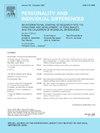United States adults' social media use and digital emotion regulation in everyday life: The potential of social media to be harnessed for mental health
IF 3.5
2区 心理学
Q1 PSYCHOLOGY, SOCIAL
引用次数: 0
Abstract
Despite common knowledge that adults regularly engage in social media use (SMU), research has not yet described basic characteristics of their SMU, such as frequency, time spent, and SMU to impact emotions (i.e., digital emotion regulation [ER]). Further, research has not examined how these real-time features of adults' SMU relate to wellbeing. Adults (N = 179; Mage = 35.3; SDage = 12.26) residing in the United States received five daily surveys for 14 days, reporting how much they engaged in SMU, if they had digital ER goals, and momentary affect. They reported depression at a laboratory session. Participants indicated SMU almost 50 % of surveys for 1–15 min on average and digital ER goals almost 40 % of the time. Increasing age was associated with less SMU and fewer digital ER goals. Women and men engaged in similar amounts of SMU, but men reported more ER goals. Participants engaged in more SMU and had more ER goals in moments they felt worse and with increasing depression. These findings characterize how adults engage in SMU from young- to middle-adulthood. Although future research should clarify directionality, findings suggest SMU is an ER tool for adults that is relied upon more when wellbeing is lower.
求助全文
约1分钟内获得全文
求助全文
来源期刊

Personality and Individual Differences
PSYCHOLOGY, SOCIAL-
CiteScore
8.50
自引率
4.70%
发文量
577
审稿时长
41 days
期刊介绍:
Personality and Individual Differences is devoted to the publication of articles (experimental, theoretical, review) which aim to integrate as far as possible the major factors of personality with empirical paradigms from experimental, physiological, animal, clinical, educational, criminological or industrial psychology or to seek an explanation for the causes and major determinants of individual differences in concepts derived from these disciplines. The editors are concerned with both genetic and environmental causes, and they are particularly interested in possible interaction effects.
 求助内容:
求助内容: 应助结果提醒方式:
应助结果提醒方式:


